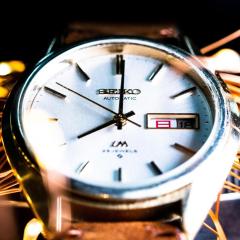Miyota Automatic Service - "three Screws To Rule Them All"
-
Similar Content
-
Recently Browsing
- No registered users viewing this page.
-
Topics
-
Posts
-
By Neverenoughwatches · Posted
Would the paint increase the resistance of the coil ? Effectively joining the wires that are painted. I imagine its important to only paint the smallest of areas to make the repair.
-









Recommended Posts